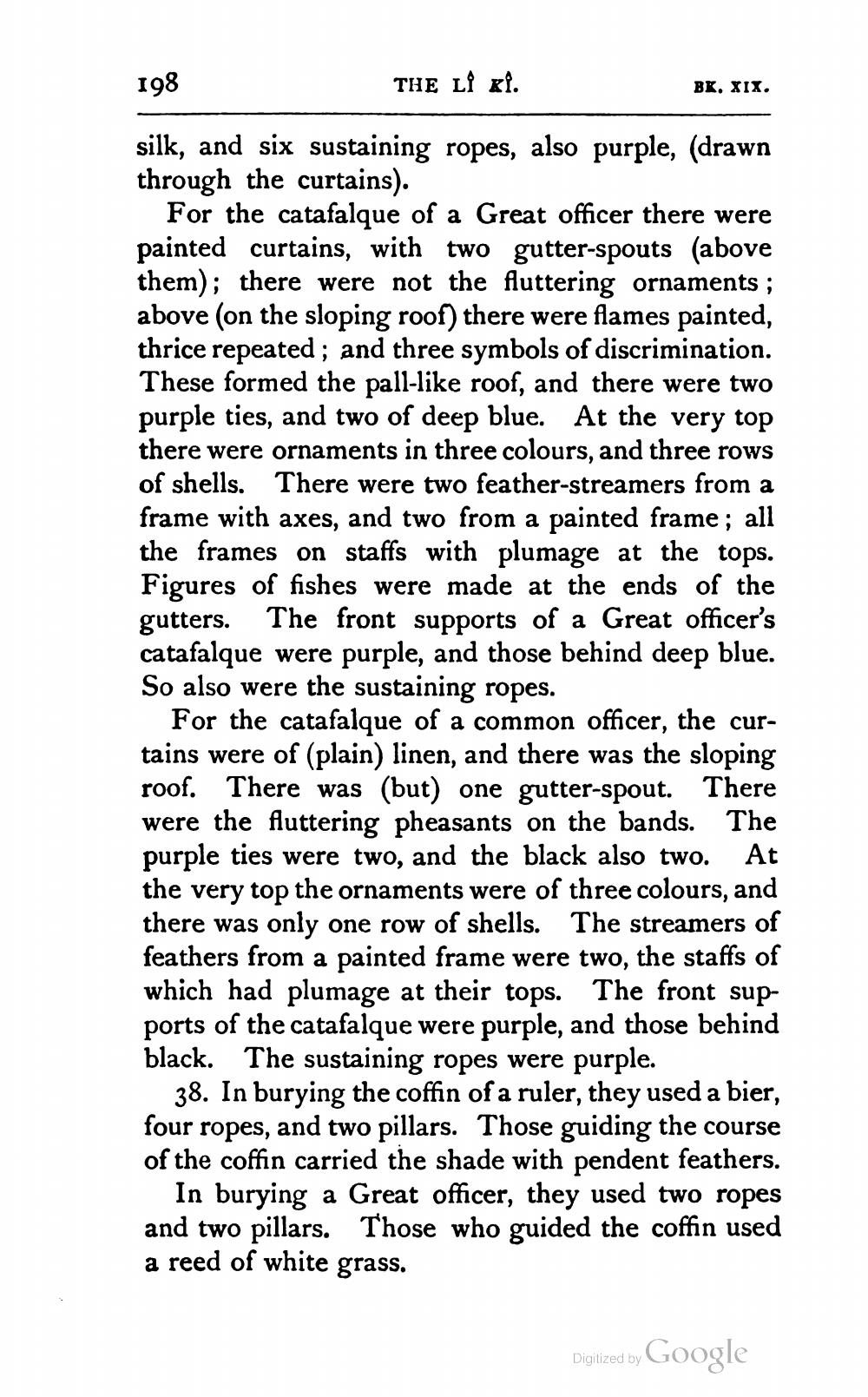________________
198
THE LÎ kl.
BK. XIX.
silk, and six sustaining ropes, also purple, (drawn through the curtains).
For the catafalque of a Great officer there were painted curtains, with two gutter-spouts (above them); there were not the fluttering ornaments ; above (on the sloping roof) there were flames painted, thrice repeated ; and three symbols of discrimination. These formed the pall-like roof, and there were two purple ties, and two of deep blue. At the very top there were ornaments in three colours, and three rows of shells. There were two feather-streamers from a frame with axes, and two from a painted frame; all the frames on staffs with plumage at the tops. Figures of fishes were made at the ends of the gutters. The front supports of a Great officer's catafalque were purple, and those behind deep blue. So also were the sustaining ropes.
For the catafalque of a common officer, the curtains were of (plain) linen, and there was the sloping roof. There was (but) one gutter-spout. There were the fluttering pheasants on the bands. The purple ties were two, and the black also two. At the very top the ornaments were of three colours, and there was only one row of shells. The streamers of feathers from a painted frame were two, the staffs of which had plumage at their tops. The front supports of the catafalque were purple, and those behind black. The sustaining ropes were purple.
38. In burying the coffin of a ruler, they used a bier, four ropes, and two pillars. Those guiding the course of the coffin carried the shade with pendent feathers.
In burying a Great officer, they used two ropes and two pillars. Those who guided the coffin used a reed of white grass.
Digitized by Google




